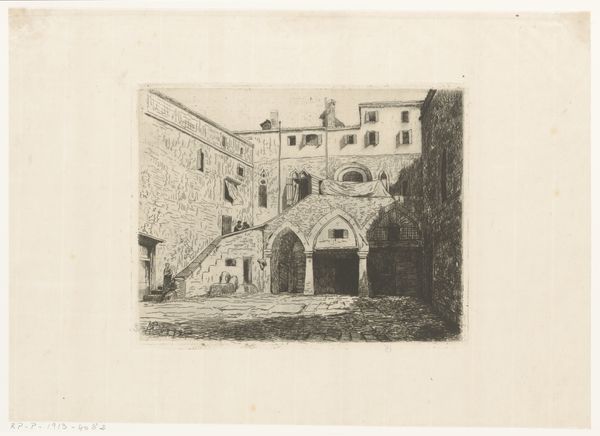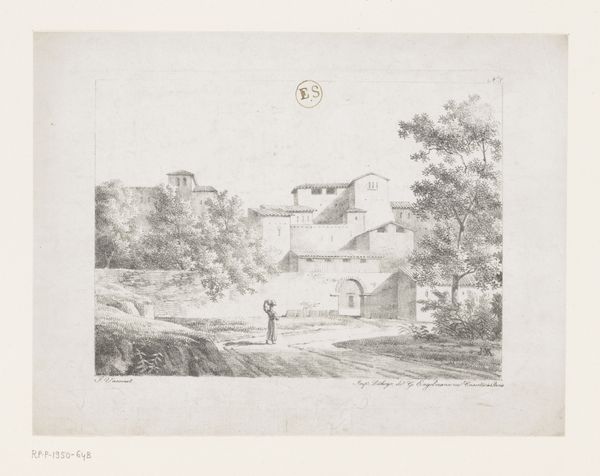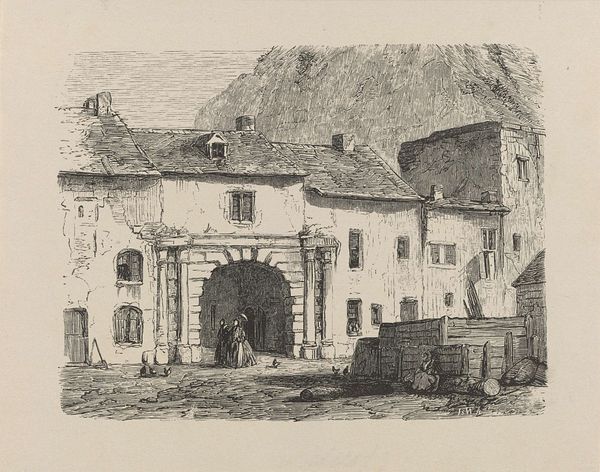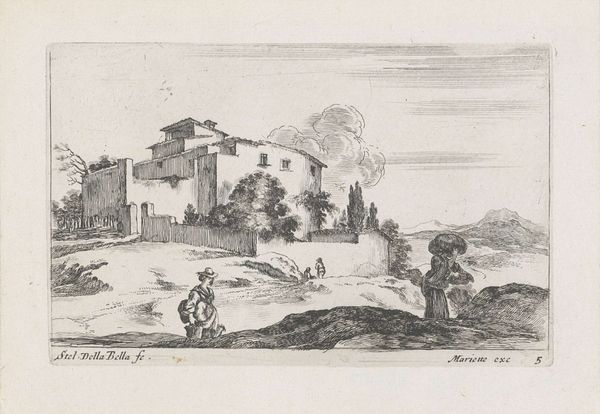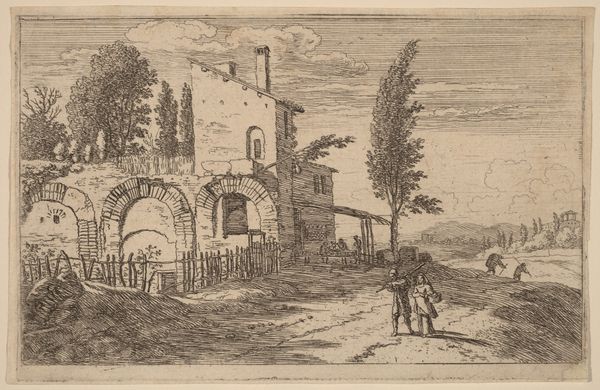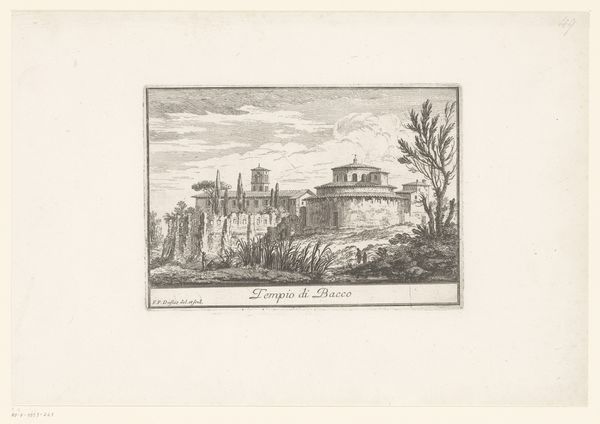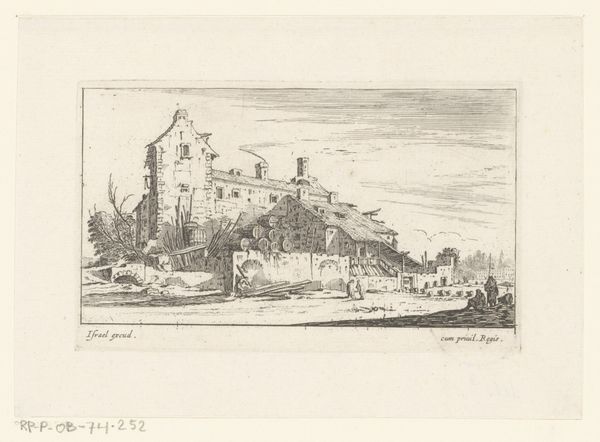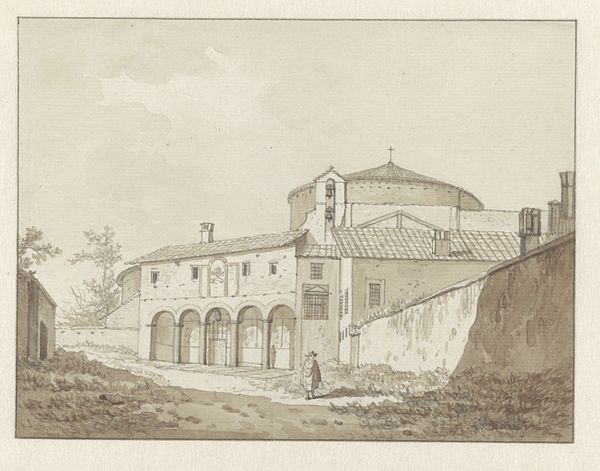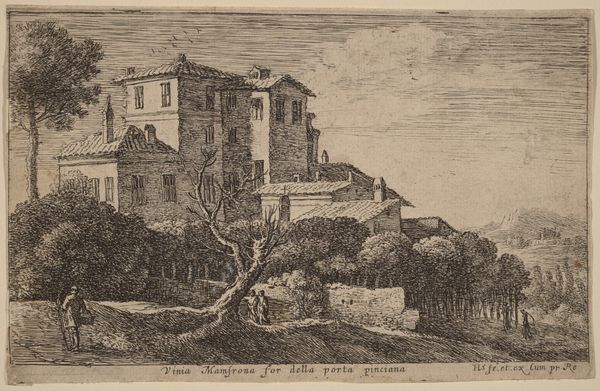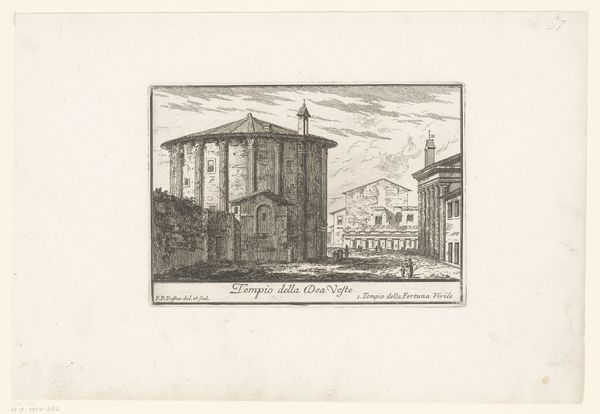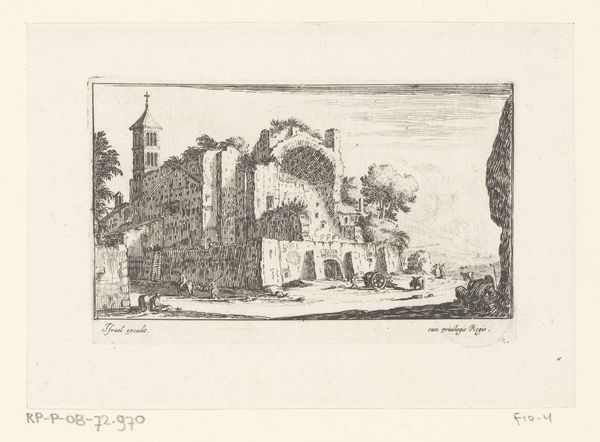
print, etching, engraving, architecture
#
neoclacissism
# print
#
etching
#
landscape
#
classical-realism
#
form
#
line
#
cityscape
#
engraving
#
architecture
#
realism
Dimensions: height 135 mm, width 205 mm
Copyright: Rijks Museum: Open Domain
Curator: This etching from 1751, attributed to Giacomo Quarenghi, captures "Gezicht op een stadspoort in Rome" or, a "View of a City Gate in Rome." Editor: There's a stillness about this cityscape. The etching feels almost photographic in its realism, and this level of detail is particularly intriguing given the period. It emphasizes line work to give an image a sense of peace that I appreciate in the city view. Curator: Considering Rome's layered history, and Quarenghi’s connection to neoclassicism, how do you interpret the portrayal of the city gate? Does it strike you as a nostalgic glance, or perhaps something more forward-looking, anticipating the transformations underway during the Enlightenment? I'm especially interested in the gate as both division and access. Editor: It strikes me as a document, a record of the gate’s very material presence, how it functions. The work involved in building it and how that labor affects daily life, and not much seems glorified here; the method is clearly descriptive and attempts to capture a place outside idealizations or mythology. Look closely and notice the layers upon layers it took to render a seemingly simple illustration! Curator: Indeed! And yet, there's a choice being made here to focus on this particular urban element, right? Architecture and landscape in the late 18th-century carry a weight of socio-political ideology, so to see an artist depicting it is an important cultural statement. The people underneath the gate, like a faceless population that seems to blend right into the brick, serve the historical process and the labor conditions. What does this say about life? Editor: Absolutely, it makes the urban population a visible, essential part of Rome. Here, labor is not an abstraction; rather, the rendering emphasizes what the population did and how that affected daily urban flow through their city. And Quarenghi did it with an astonishing manipulation of media--etching and engraving! Curator: That interplay you describe speaks volumes about power, perspective, and even the human scale of progress... It invites us to contemplate our place within broader societal shifts and histories. Editor: Agreed, and I'd encourage viewers to engage deeply with the medium of the period because prints can have a democratic feel in ways that resonate beyond just an image or an idea. Curator: Precisely, it asks, whose city is this?
Comments
No comments
Be the first to comment and join the conversation on the ultimate creative platform.
